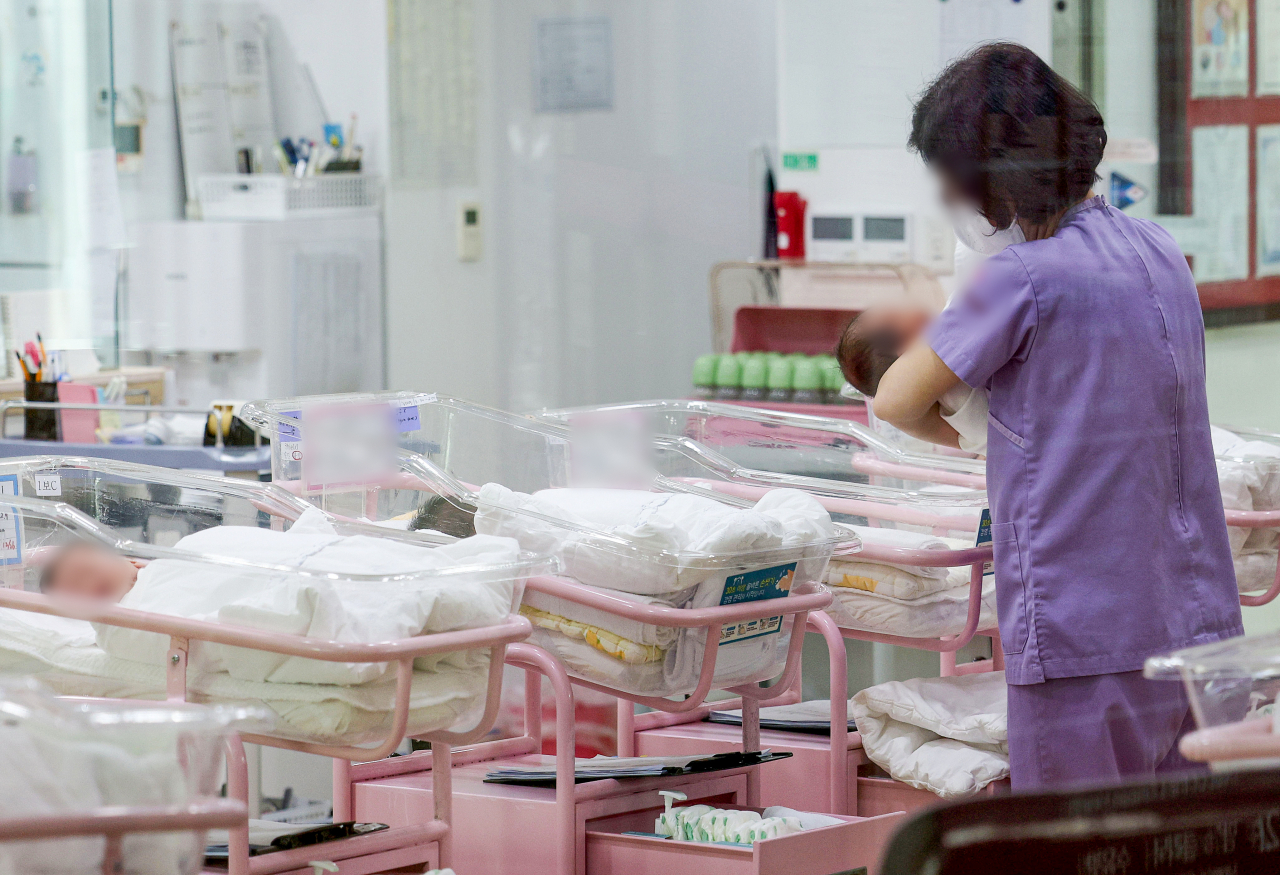
South Korea's fertility rate continued its steep fall last year as it hit a record low of 0.72, darkening prospects for the country that already has the world's lowest fertility rate, data showed Wednesday.
The country's fertility rate -- the average number of children a woman has during her lifetime -- came to 0.72 last year, down from 0.78 in the previous year, according to the preliminary data presented by Statistics Korea.
It is the lowest level since 1970 when the state-run statistics agency began compiling related data. The figure has been hitting a new low every year since 2016 and has remained under 1 for the past six years.
The country saw 230,000 newborns last year, down nearly 19,200 or 7.7 percent from the 249,186 in the previous year.
Korea has been witnessing a steep decline in its birth rate. While 406,243 babies were born in 2016, the number dropped to 357,771 in 2017 and further fell to 272,337 in 2020.
Korea was the only country whose total fertility rate stayed below 1 among 38 member countries of the Organization for Economic Cooperation and Development when compared with the latest available data from 2021. The total average fertility rate for the OECD countries in 2021 stood at 1.58, while that of Korea was 0.81.
By region, the capital Seoul showed the lowest total fertility rate with 0.55, followed by Busan at 0.66 and Incheon at 0.69.
Amid the sharp decline, the quarterly total fertility rate fell below 0.7 in the September-December period to 0.65, marking a 0.05 drop on-year, dropping below 0.7 for the first time.
“The total fertility rate in 2023 came down to 0.72 due to the continuous decline in the number of marriages after the COVID-19 pandemic. The (pandemic) effect is likely to continue this year,” Lim Young-il, head of the population census division at Statistics Korea, said.
Last year, the statistics agency projected the figure to further fall to 0.68 this year and to 0.65 next year.
“The rise in the number of marriages could lead to more births, leaving room for the potential rebound of the total fertility rate,” Lim said. A total of 193,673 marriages were registered last year, marking a 1 percent increase on-year.
“But there is the tendency to not give birth even after marriage, making the probability lower than in the past,” he added.



















![[Today’s K-pop] Treasure to publish magazine for debut anniversary](http://res.heraldm.com/phpwas/restmb_idxmake.php?idx=642&simg=/content/image/2024/07/26/20240726050551_0.jpg&u=)